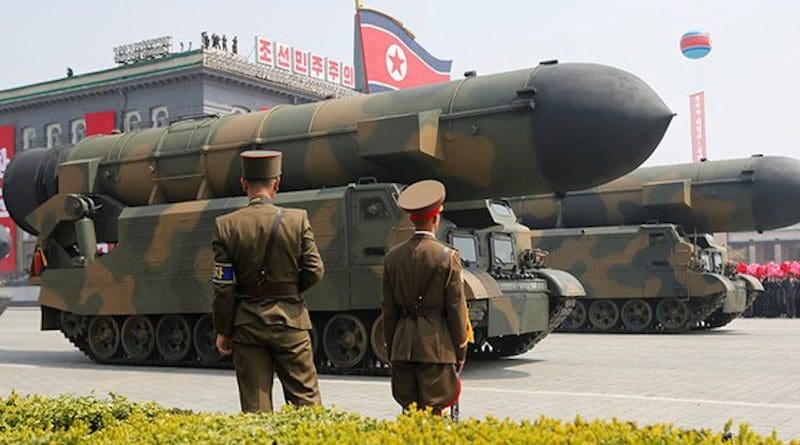North Korea Set To Offer World Glimpse Of Its Prowess – Analysis
In the next two months, North Korea’s latest test of an ICBM-type, long-range missile or a nuclear weapon may occur. Such activity is traditional for Pyongyang. It conducted such actions shortly after the inaugurations of both Presidents Barack Obama and Donald Trump. In this cycle, the thinking is that Pyongyang will opt to conduct a test sooner rather than later.
North Korean leader Kim Jong Un this week held a Politburo meeting, making a public appearance with his sister, Kim Yo Jong, who is a deputy Politburo member, in attendance. The timing is key, given the ongoing global pandemic, which has seen North Korea beginning to take active measures against the coronavirus disease. To that end, the leadership sees a strategic opportunity. To Pyongyang, America is in a weakened position.
North Korea is pressing ahead with its nuclear weapons program and several countries know that it is miniaturizing nuclear devices to fit into the warheads of its ballistic missiles, while also working with light water reactors. Pyongyang has not conducted a nuclear test since September 2017.
That may change soon.
When North Korea revealed a new, heavy intercontinental ballistic missile at its Oct. 10 military parade, the immediate reaction was that it would soon test its long-range systems. The rare night-time military parade celebrating the 75th anniversary of the Workers’ Party of Korea, the country’s ruling party, was a spectacle to behold for North Korea and viewers around the world. Pyongyang wanted to show its strength and place in the world. Now, just a month later, developments in the US have helped to build some strategic relief into the picture.
Thus, North Korea is likely to send a message to US President-elect Joe Biden that it is a country that stands on its own. During its negotiations with the Trump administration, North Korea continued to advance its missile and delivery systems. Arms control is not possible with this regime, given the strong, indigenous desire to be a world power using its “Juche” ideology as a cultural driver. The North is achieving a more global role by relying on deception, much the same as Iran does with its nuclear program.
The US is already testing its capabilities to counter these North Korean developments. An Aegis-class destroyer operating near Hawaii this week fired a Standard Missile-3 model Block II A, directly hitting a dummy ICBM launched from the Kwajalein Atoll in the Marshall Islands. Both were flying at hypersonic speed — a true technological feat — with the missile fired from a seaborne platform.
This test showed how to defeat an ICBM-class target as part of a layered defense architecture for the US homeland. There are already 44 interceptors in silos in Alaska and California. Distribution of the system by American naval vessels helps to spread out the defensive missile capability by casting a “net.” This factor is important, as North Korea continues to build missiles with the hypothetical range capability to hit the US mainland.
The US missile test is meant to illustrate to North Korea that any further development of its technology base would be a drain on its resources during the pandemic.
The next American administration will be extremely tough on North Korea. Biden has criticized Trump’s engagement with Kim, which, according to the president-elect, weakened US sanctions. Biden called Kim a “thug” and was highly critical of North Korea throughout his 2020 presidential election campaign.
The Biden White House will also have to contend with another North Korean development: Its multiple independently targetable reentry vehicle (MIRV) technology. Pyongyang’s Hwasong-16 is a MIRV-equipped missile that can potentially carry several nuclear warheads, each capable of striking a different target. The idea is for North Korea’s nuclear-tipped MIRVs to overwhelm ballistic missile defenses after launch and in the descending phase. US officials will need to think fast about countering this possibility.
Overall, the next administration’s rhetoric and actions will be telling regarding what comes next in terms of alignment of US allies. Japan is heavily involved, given that Tokyo is building parts of the new American ICBM. Relations with South Korea are also on the mend because of North Korea’s actions. Pyongyang’s assertiveness at this juncture is helping to unify America’s allies rather than enabling it to play them off against one another. But North Korea will likely soon give the world a glimpse of its prowess via visual confirmation or a nuclear site earthquake.

